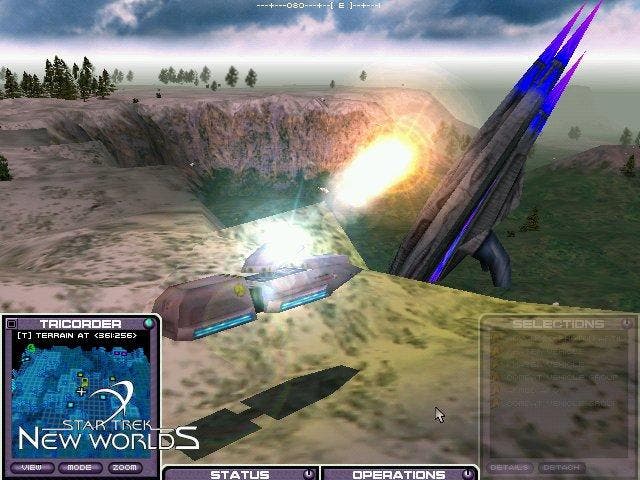Dollywood And The Gaming Industry
Or : "It's the end of the world as we know it (and I feel fine)"
At ECTS last month, both 3dfx and NVIDIA were setting their sights on Digital Hollywood.
According to NVIDIA we are only a few years away from being able to render scenes as complex as those in A Bug's Life or Toy Story in real time on our humble desktop PC.
Why does this scare me?

Hooray For Dollywood?
Jason Leighton, formerly of Outrage, explains the problem -
"I grew up in an age where one or two people made an entire game, so there wasn't a whole lot of arguing on what constituted a good game. When I actually got into the industry it was still possible for a small team (5-7 people) to create an awesome mainstream game."
"Unfortunately due to market pressures that is no longer possible. Cut scenes, character modelling, and the general complexity of working in a 3d environment have brought skyrocketing costs to developing a game."
As models, environments, special effects, textures, and even the games themselves all get more complex, development teams and their budgets are getting bigger and bigger.
The latest Final Fantasy game, for example, was created by a team of literally dozens of artists, writers and programmers, and had a budget approaching that of a Hollywood blockbuster.
David Perry, a gaming industry veteran and founder of Shiny, sees this trend continuing.
"Yes, budgets will get bigger, so will research costs. It means that teams with big financial backing are gonna have a lot of fun. Teams with little financial backing will be eating beans for 2 years, then crossing their fingers."

Breakout
Getting that financial backing is the problem, especially for new companies trying to break into the gaming industry.
Bob Wade, co-founder of Binary Asylum, told me in a recent interview that it is "impossible to break into the industry now without multi-million pound backing and all the restrictions that usually go along with that".
This means that "most creativity, originality and talent is crushed before it gets anywhere near a published game. The industry just isn't set up to encourage new talent and ideas".
Jason agrees, explaining that "it is extremely difficult to make money in the PC games industry (primarily due to the horrible distrubution chain), so publishers have to be careful on which games they choose to develop".
"Most take the safe route and churn out sequels to established franchises, or make last year's hits, only this time 5% different."
Because of this Jason believes that in the future "the real innovation is going to come from budgetware titles (titles costing $20 or less) or titles that are distributed via the web".

Independence Day
Where does this leave smaller independent studios, like id Software and Epic Games?
Tim Sweeney of Epic told us "I can't think of any good sides to 100-person development projects and huge budgets! Some games will go that way, but it's not an interesting situation to us".
So what are the alternatives? "There are different directions games can go, and we're already seeing teams heading off in these different directions", Tim explained.
"One direction is towards linear gameplay with huge amounts of content, like Final Fantasy, or Half Life. To compete there you need a huge team, a huge budget, and huge resources."
"The other direction is less content but more open-ended gameplay, like our 12-person team is doing with Unreal Tournament. There are 50 levels, but an endless variety of gameplay variations supported (teamplay, deathmatch, tournament mode, lots of gameplay mutators); thousands of user-created maps and gameplay mods available for download; and Internet play with persistent stats to keep people playing."
"The difference will be the focus, whether it's on quantity of content, or open-ended gameplay. We're totally going to open route."

I Feel Fine
Whichever direction a developer chooses though, one thing is certain. "Both types of game will evolve awesome visuals, and will continue to catch up on movie special effects".
According to Tim "we're really not too far behind, say just 6 years behind state-of-the-art non realtime rendering".
That means that by 2005 we should be playing computer games with characters and environments as detailed as those in A Bug's Life, and special effects as impressive as anything The Matrix can offer.
For game developers that can afford to stay ahead of that technology curve, it's going to be an exciting ride... Thanks to David Perry, Tim Sweeney, Jason Leighton and Bob Wade for helping with the preperation of this article.

